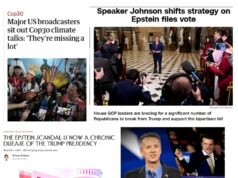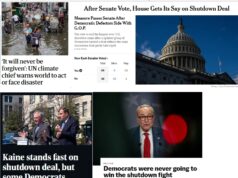by Ivy Main, cross posted from Power for the People VA
My post last week covered the significant renewable energy bills, especially solar bills, introduced by the end of the first week of the 2018 legislative session. In this post I tackle three other bill categories of interest to clean energy advocates: energy efficiency, energy storage, and electric vehicles.
There is more to some of these bills than my brief description indicates; I just highlight the points I think are most interesting. Also, as with the solar bills, there may be more bills added in the coming week, so keep checking back for updates.
Energy Efficiency
Virginia’s woeful performance on energy efficiency was the subject of a recent guest post here by my colleague Melissa Christensen. A number of legislators have tried in recent years to turn this around, with remarkably little success.
Delegate Rip Sullivan has worked as hard as anyone on finding legislative fixes. He has several efficiency bills this year. HB 963 is the most impactful, requiring electric and gas utilities to meet energy efficiency targets, and to submit plans to the State Corporation Commission (SCC) for its approval describing how they will achieve the targets. The bill would also require utilities and the SCC to prioritize money-saving efficiency measures over proposals for new generation or transmission facilities.
Taking a narrower approach to the problem, two other Sullivan bills address the four tests the SCC uses to determine whether to approve an energy efficiency program proposed by a utility. The SCC has relied on the Ratepayer Impact Measure (RIM) test to reject programs that otherwise would provide cost-effective energy savings. HB 964 removes the RIM test from the list of tests the SCC is required to consider when determining that an energy efficiency program proposed by an electric utility is in the public interest. Instead, the SCC would consider whether the net present value of a program’s benefits exceeds the net present value of its costs as determined under the Total Resource Cost Test, the Utility Cost Test, and the Participant Test.
Taking a different tack, HB 965 defines the Total Resource Cost Test as a test to determine if the benefit-cost ratio of a proposed energy efficiency program or measure is greater than one. An energy efficiency program or measure that meets the Total Resource Cost Test is declared to be in the public interest. If it fails the test, it would then be reviewed under the other tests.
Delegate Tim Hugo’s HB 1261 proposes another way to undercut the SCC’s over-reliance on the RIM test. The bill provides that an energy efficiency program proposed by an electric utility is in the public interest if the net present value of the benefits exceeds the net present value of the costs as determined by any three of the existing law’s four benefit-cost tests. At least, that is surely the intent. Other reviewers say the bill’s wording could potentially be interpreted in a way that undermines its intent.
Two other Sullivan bills also deserve mention. HB 560 establishes a revolving fund to provide no-interest loans to any locality, school division, or public institution of higher education for energy conservation or efficiency projects. HB 204 would allow localities to adopt ordinances to assist commercial building owners in getting energy usage data for tenants in the building.
Finally, Delegate Bell’s HB 58 would generally require state agencies to use LED bulbs instead of incandescent light bulbs for new outdoor lighting fixtures or when replacing bulbs in existing fixtures.
Energy storage
Energy storage is one of the hot topics in energy today. In most states, the focus is on advanced battery technology, which can take the form of battery packs small enough for residential and commercial customers, or arrays large enough to provide utilities with an alternative to new generating plants. The value of customer-sited battery systems goes beyond being able to use solar energy at night; batteries can also provide grid services and help communities prepare for widespread power outages caused by storms or attacks on the grid.
In Virginia, Dominion Energy currently seems more interested in pumped storage hydropower, a decades-old technology that uses reservoirs to store surplus energy, traditionally energy generated at night from coal and nuclear plants, for use in the daytime. A 2017 law gives Dominion support for pumped storage using old coal mines, potentially a boost for the economy of Southwest Virginia but an unproven technology rife with questions about its economic viability and environmental impacts.
At any rate, energy storage will be playing an increasingly important role in Virginia as elsewhere, and three of this year’s bills address it. Delegate Toscano’s HB 1018 seeks to incentivize customer acquisition of energy storage systems with a tax credit of 30% of an energy storage system’s cost, up to $5,000 for a residential storage system or $75,000 for a commercial system. Delegate Habeeb’s HB 782 addresses energy storage at the utility level. It requires the SCC to establish a pilot program under which Dominion and APCo would submit proposals to deploy batteries, up to 10 MW for APCo and up to 30 MW for Dominion.
HJ 101 (Toscano) is a study bill. It tasks the Department of Mines, Minerals and Energy with conducting a two-year study to determine what regulatory reforms and market incentives are necessary to increase the use of energy storage devices in Virginia (including pumped storage hydropower).
Electric Vehicles
As with battery storage, electric vehicle technology is only just starting to register as an important topic in Virginia, and its impact—on utilities, the grid, air pollution and the economy—is just beginning to be discussed. This may be the year legislators become engaged. DriveElectric RVA, an electric vehicle advocacy group, plans to offer test drives of EVs at the capitol on January 22, Conservation Lobby Day.
Three bills deal with EVs this year. HB 469 (Reid) offers a tax credit of up to $3,500 for purchase of a new electric vehicle. HB 922 authorizes local governments to install charging stations and charge for the electricity (individuals and businesses can already do so). HJ 74 (Reid) requires a study of the impacts of vehicle electrification, including on workers in the automotive repair industry. One of the selling points for EVs is that they require minimal maintenance.












![[UPDATED with Jim Ryan’s Letter] In Response to Youngkin’s “Sad, Whiny” Letter to Spanberger About UVA, VA Senate Majority Leader Surovell Says He’s “truly embarrassed for Gov Youngkin…After 4 yrs he has no understanding of basic VA govt structure”](https://bluevirginia.us/wp-content/uploads/2025/11/youngkinspanuva3-100x75.jpg)
